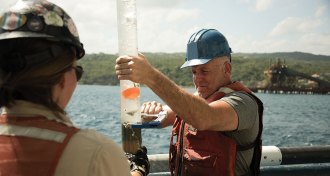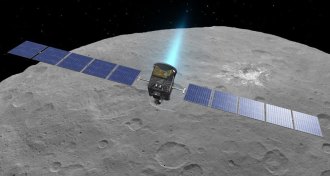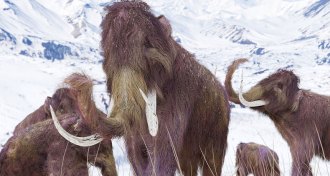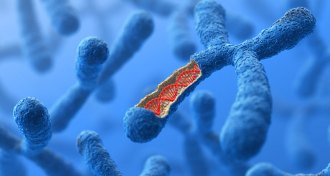All Stories
-
 Climate
Climate‘Killer Hurricanes’ reconstructs the past to predict storms of the future
Geologists find clues to the future of deadly hurricanes, written in stone and sand, in the new NOVA documentary “Killer Hurricanes.”
-
 Environment
EnvironmentPollution killed 9 million people in 2015
First global look estimates the massive human and financial toll caused by pollution-related health problems.
By Laura Beil -
 Astronomy
AstronomyDawn spacecraft will keep orbiting the dwarf planet Ceres indefinitely
NASA just gave the Dawn spacecraft a second mission extension to orbit Ceres indefinitely.
-
 Anthropology
AnthropologyScientists battle over whether violence has declined over time
People are no more violent in small-scale societies than in states, researchers contend.
By Bruce Bower -
 Genetics
GeneticsResurrecting extinct species raises ethical questions
'Rise of the Necrofauna' examines the technical and ethical challenges of bringing woolly mammoths and other long-gone creatures back from the dead.
-
 Genetics
GeneticsDoubling up on ‘junk DNA’ helps make us human
DNA duplicated only in humans may contribute to human traits and disease.
-
 Health & Medicine
Health & MedicineLaws to protect athletes’ brains do reduce concussions — eventually
Recurrent concussions among high school athletes went down about 2½ years after traumatic brain injury laws were on the books, a new study finds.
-
 Life
LifeThe next wave of bird flu could be worse than ever
Deadly bird flu can pass between ferrets through the air.
-
 Tech
Tech50 years ago, engineers tried catching commercial planes in nets
Fifty years ago, aviation experts tried helping commercial aircraft come to a stop during landing by catching them in massive nets. The idea crash-landed for commercial flights, but it’s still used in the military.
-
 Life
LifeThe physics of mosquito takeoffs shows why you don’t feel a thing
Even when full of blood, mosquitoes use more wing force than leg force to escape a host undetected — clue to why they’re so good at spreading disease.
-
 Health & Medicine
Health & MedicineAnimal study reveals how a fever early in pregnancy can cause birth defects
Using chicken embryos, study shows that heat itself, not an infectious agent, is the driving factor behind certain heart and facial birth defects.
-
 Artificial Intelligence
Artificial IntelligenceThe newest AlphaGo mastered the game with no human input
AlphaGo Zero is the first AI system of its kind to learn the game just by playing against itself.